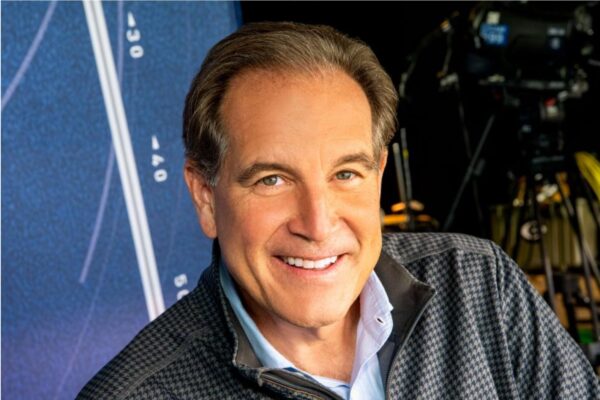By Josh Roller | @Roller_01
Sports Capital Journalism Program
INDIANAPOLIS — Associated Press reporter Michael Marot, a longtime colleague of college basketball writer Jim O’Connell, remembered the reporter who made 20 trips to cover the Maui Invitational basketball tournament before his death in July, 2018.
“[He] was the only guy who went to the Maui Invitationals and never went to the beach,” Marot said. “He was just one of those guys you wanted to be around for days.”
Marot described the professionalism of his colleague and friend, who edited stories at the AP headquarters in New York City when he was not covering basketball games. “He was always a stickler on details and fine points,” Marot said, “and those things always sort of stick with you…He was an old school guy and we lack that in this business. And it was good to be around that because when you are around that on a routine basis you learn things every day.”
In the current state of college basketball, with revenues increasing to once-unimaginable levels and increasing pressures to reward the athletes bringing millions to the schools, Marot spoke about the challenges.
“[The NCAA] doesn’t have subpoena power so you are not going to get people to necessarily come in [and] tell you what they have been doing,” he said. “I don’t know how you sanction a shoe company.”
Marot had questions about the recently-revised process that will permit NCAA athletes to have greater contact and engagement with agents. He questioned whether the agents would be certified, and if so, how would that process be structured? Would agents be punished if they delivered bad information to athletes making life-altering decisions to stay in school or apply to a professional draft?
Marot was asked if NCAA men’s basketball was going to have to go a step above a traditional college athletic organization in the future, while remaining a step below a minor league.
“They are going to have to find a different sort of level to operate on, I think,” he said. “I don’t like to use this word, but I think [the NCAA] is going to have to almost be like a semi-pro organization. You are not the NBA, so you are not going to be paying these kids. You are not amateur because you aren’t really high school. And you have to find a way to fit into that other groove and I am not really sure, it’s not going to be easy. It’s not going to be simple. And there is probably going to be a lot of trial and error. When I say that, probably a lot of errors.”
Marot was asked how the NCAA and its institutions could find a balance between a star one-and-done player and an athlete who remains at the school for four years but rarely steps on the court.
He cited the consistent approach of NCAA President Mark Emmert, who has emphasized the difference between amateur athletes and paid professionals. “I tend to agree with that,” Marot said. “…Maybe that is the model they end up going to at some point, but I think getting there is going to be very difficult. I don’t think it is going to happen quickly or easily.”


